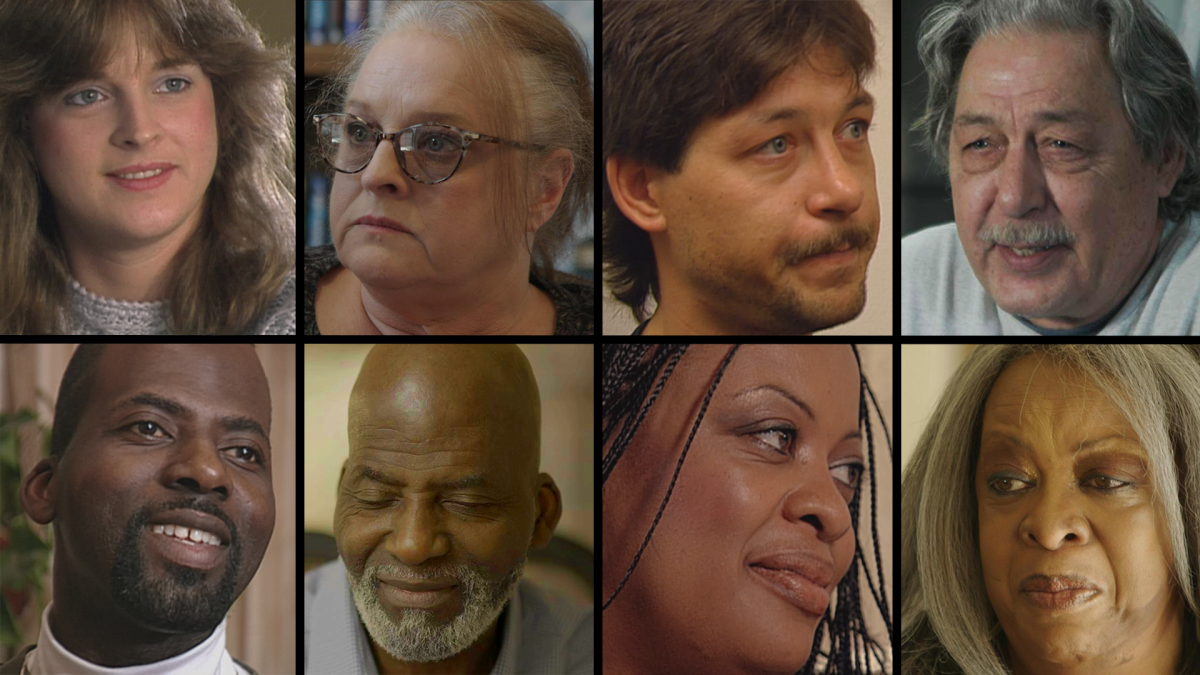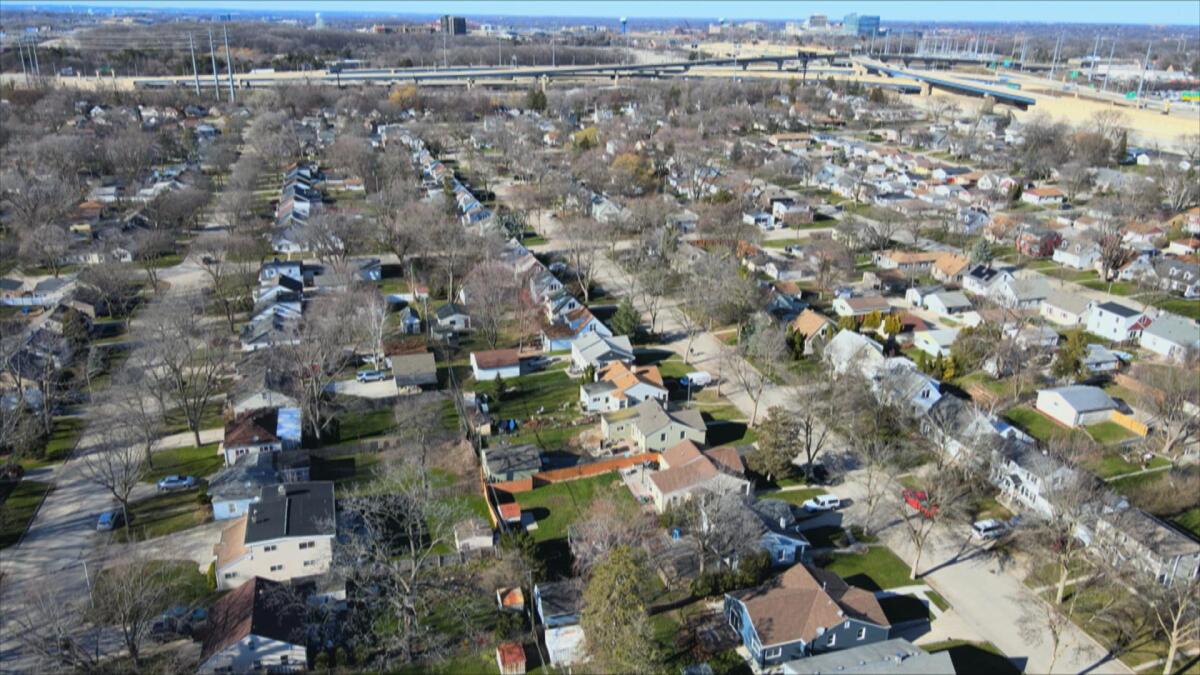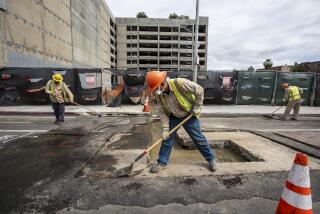‘Two American Families’ is the saga of working class struggle and survival

In the sense that television is a lens through which we view ourselves, it’s as often as not a cracked one, or one smeared with Vaseline, to make things crazier or prettier. It takes a certain kind of restraint and support — given the comparative lack of commercial potential — for TV to engage life as it is, unmediated by writers rooms or reality producers. For that, you’re going to have to turn to public broadcasting.
Filmed in five installments over 34 years, “Two American Families: 1991-2024,” premiering Tuesday on “Frontline” on PBS (and available also to stream from the PBS app and PBS.org), looks at a pair of Milwaukee families — the Neumanns, who are white, and the Stanleys, who are Black, in the aftermath of their breadwinners losing union manufacturing jobs.
Although originally planned as a single documentary — the original installment was titled “Minimum Wages: The New Economy” — it becomes over time a story of what hasn’t changed, and how that reality has changed the lives of its subjects.
Directed by Tom Casciato and Kathleen Hughes, with Bill Moyers as narrator and interviewer, it bears a resemblance to Michael Apted’s poignant British “Up” films, which began in 1964 with “Seven Up!,” looking at an assortment of 7-year-olds and, returning every seven years, ended in 2019 with “63 Up!”
That series, which began as an investigation into the effects of class on children’s prospects, became more generally a look into the ups and downs of individual lives. The social and emotional stories are inseparable, here as there.
The latest in Michael Apted’s long-running documentary series that began with “7 Up” is worth the wait.
The working class has been little represented on television, especially those with lives near or below the poverty line, where bills go unpaid and luxuries can’t even be contemplated. There was “Roseanne,” before the show went off the rails, “The Middle,” “Good Times,” “The Honeymooners” and certain characters in “Friday Night Lights.” Food insecurity is dramatic, seemingly, only if it’s part of a post-apocalyptic scenario; we’d much rather watch rich folks fight over superfluous money than a family fight to stay in its home — unless that home is a castle.
Although “Two American Families” is never expressly political — you won’t learn how any of these people voted, or whether they did — it is implicitly a critique of a system that keeps the poor poor and makes the rich richer while hollowing out the middle class. The villains glimpsed here include extortionate interest rates, predatory banks, outsourcing labor, a healthcare system that punishes those without benefits (and anyone without a job) and the destruction of the labor movement (now, at least, experiencing something of a rebirth). We see presidents from Bill Clinton onward promising a brighter tomorrow, even as little changes for the Neumanns and Stanleys, or changes for the worse.

“People are getting angry, they’re getting frustrated, they’re getting violent because they don’t see no way out,” Terry Neumann says. “There are so many people that are struggling the same way with the cost of everything and not getting enough on your paycheck to cover monthly expenses. It’s like we haven’t come very far.”
While the Stanleys face the added burden of racial discrimination — Jackie, who has her real estate license, can’t get houses to sell in more affluent, white neighborhoods — the families are not unalike. Both are churchgoers with a pack of children. Each has to reckon with increasingly violent neighborhoods. Jobs come and go, parents hunched over the classified ads as they seek work that pays a greater fraction of a living wage. They live paycheck nearly to paycheck, shifting bills, going into credit card debt. “It’s called rob Peter to pay Paul,” says Jackie, “and I’m robbing Peter so much that Peter’s just standing there.”
This is, obviously, merely a slice of lives lived every day of every year over three decades, not just during visits from the filmmakers — 34 years in two hours, edited to tell a story. The stop-motion effect highlights both stagnation and decay. Neighborhoods deteriorate, health problems arise. (“I planned for growing old,” says Jackie, “but I didn’t plan for getting sick.”) People just get old.
Still, while continuing to struggle, our characters survive. Holding hands as they sit for interviews, Claude and Jackie Stanley are the picture of a solid marriage; the Neumanns, working different schedules and rarely seen together, grow apart as the years go on, but both sets of parents remain committed to their children, now grown, some with children of their own, with their own hopes and challenges. Not all of them remain in Milwaukee.
Above all, the series is a rebuke to the fantasy, dear to certain (wealthy) politicians, that any family can (and some of them say) survive on a single paycheck. Bootstraps can lift you only so far.
“I think we are fooling ourselves if we believe that it’s only hard work,” says Keith Stanley, whose parents struggled to keep him in college and who now runs an economic development agency in Charlotte, N.C. “Many times, it’s about luck, it’s about who you know, it’s about your ZIP Code, and I think sometimes that’s conflated within our society with ‘You work really hard, you will be successful.’ I think there’s a lot more to that equation.”
More to Read
The complete guide to home viewing
Get Screen Gab for everything about the TV shows and streaming movies everyone’s talking about.
You may occasionally receive promotional content from the Los Angeles Times.







